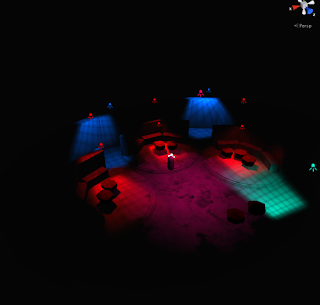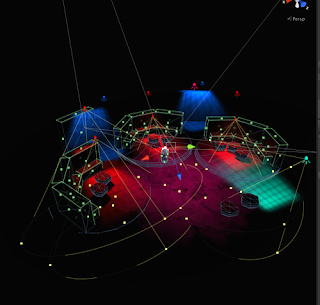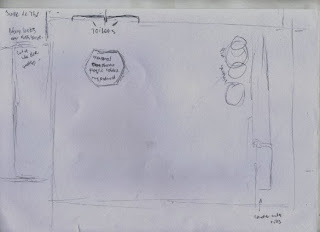To populate the game world I created several small assets, these assets provided visual narrative context to the space.
Despite laws in most places that prohibit smoking in public spaces, the novel was written before these laws came into effect, as such, several characters smoke in public spaces, including the Jarre de Thé
The Yin-yang symbol was added to the booth screens to signify the Asian location of the Jarre de Thé
Even though the novel is set in Japan, Gibson makes frequent reference to signs being depicted in English due to its status as a universally known language in the novel's setting. Similarly the green exit sign is a universally known symbol.
The casing of the self service terminal was designed to evoke the style of computer monitors used in the 80's and 90's, the bright red plastic cover fits into the thematic design of the rest of the game space. The blue screen shows that the terminal is damaged thanks to the poor maintenance found throughout the Ninsei area.
The coffee dispenser was designed following the philosophy that automation will gradually replace human staff in cyberpunk locations.
Following the same design philosophy of the coffee dispenser, however it has suffered internal damage and does not travel about the space cleaning up, leading to dirt being found around the space.











.png)






























